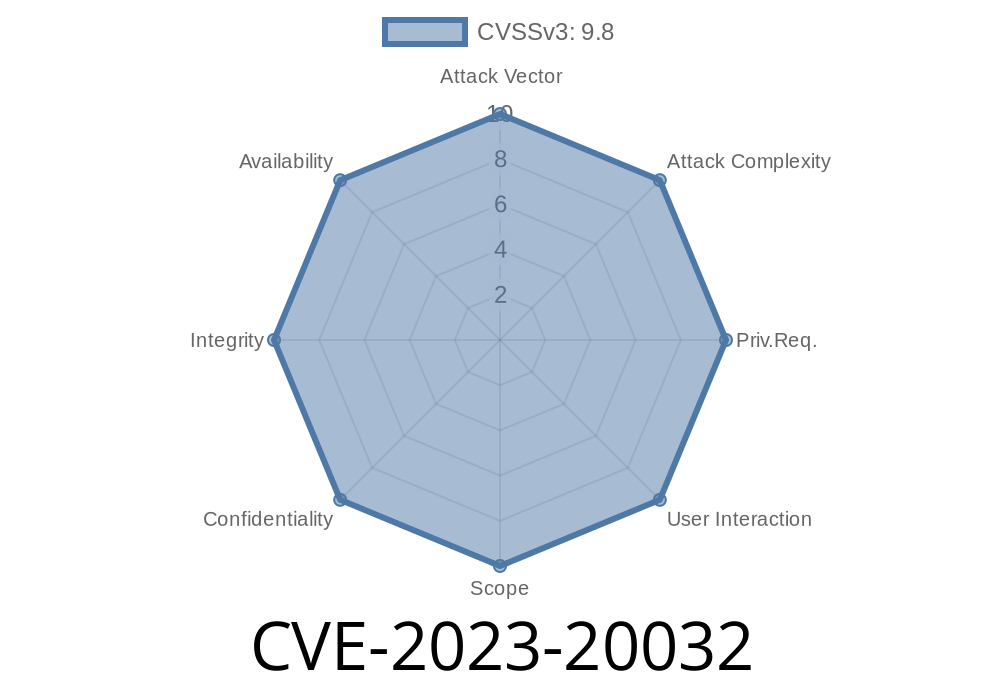On February 15, 2023, a critical vulnerability was disclosed in the ClamAV scanning library, affecting devices running ClamAV versions 1.. and earlier, .105.1 and earlier, and .103.7 and earlier. This vulnerability, known as CVE-2023-20032, could potentially enable an attacker to execute arbitrary code on the affected device or cause a denial of service (DoS) condition. In this post, we will discuss the exploit details, show a code snippet demonstrating the vulnerability, and provide links to the original references and prevention measures.
Exploit Details
The vulnerability in question is found in the HFS+ partition file parser of the ClamAV scanning library. A missing buffer size check may result in a heap buffer overflow write, which could be exploited by an unauthenticated, remote attacker. The attacker would need to submit a crafted HFS+ partition file to be scanned by ClamAV on the affected device.
If successful, the attacker could execute arbitrary code with the privileges of the ClamAV scanning process, or crash the process, resulting in a DoS condition. More information about this vulnerability can be found on the ClamAV blog [https://blog.clamav.net/].
Code Snippet
To illustrate the vulnerability, let's take a look at a code snippet that demonstrates the missing buffer size check:
int parse_hfsplus_partition(...) {
...
char *buffer = (char *)malloc(size);
...
memcpy(buffer, input_data, data_length);
...
}
In this example, there is no check to ensure that data_length is not greater than the size of the allocated buffer, resulting in a potential heap buffer overflow issue.
Original References
For a comprehensive description of this vulnerability, you can find the original disclosure on the ClamAV blog [https://blog.clamav.net/]. Additional information and prevention measures can also be found at the following sources:
- The official ClamAV source code repository: https://github.com/Cisco-Talos/clamav
- The National Vulnerability Database: https://nvd.nist.gov/vuln/detail/CVE-2023-20032
Prevention and Mitigation
To prevent this vulnerability from being exploited, users of ClamAV should update their software to the latest available version. The ClamAV developers have released the following patched versions that resolve the vulnerability:
ClamAV version .103.8
Devices running these, or later, versions of the software are considered to be protected against the CVE-2023-20032 vulnerability.
Conclusion
The CVE-2023-20032 vulnerability in the ClamAV scanning library is considered critical and poses a significant risk to systems running affected versions of the software. If successfully exploited, an attacker could execute arbitrary code or cause a denial of service condition. It is strongly recommended that users of ClamAV update their software to a patched version to protect against this vulnerability.
For more information on this vulnerability, links to original references, and further prevention measures, be sure to visit the ClamAV blog [https://blog.clamav.net/] and the National Vulnerability Database [https://nvd.nist.gov/vuln/detail/CVE-2023-20032].
Timeline
Published on: 03/01/2023 08:15:00 UTC
Last modified on: 03/10/2023 01:15:00 UTC
